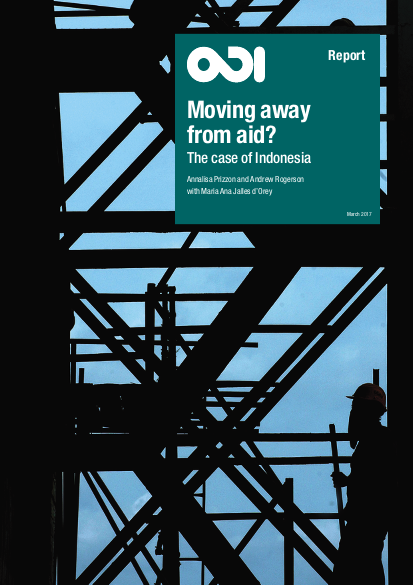
Over the past 15 years, 35 low-income countries have joined the ranks of the world’s middle-income countries: a reflection of the strong and sustained economic growth achieved in most parts of the developing world. As a result of this improved income status, every aspect of the development finance landscape is likely to change for those counties, from the sources of finance and financial instruments available to them, to the volume of aid and the conditions attached to it. One obvious result is their reduced need for traditional forms of aid. They are likely to see a reduction in funding from bilateral donors and a shift from grants to loans. The terms and conditions of sovereign loans from multilateral development banks (MDBs) will become harder.
This report focuses on how the Government of Indonesia has managed the transition from concessional to less concessional finance. Indonesia is now only eligible for loans from the World Bank’s ‘hard’ lending window, but the country’s graduation to this status has not been smooth. Indonesia first graduated in 1980, but that was then derailed in 1999, following the Asian financial crisis, after which the country again became eligible for softer loan terms. Its second graduation occurred only in 2009.
An analysis of the development finance landscape in Indonesia reveals that, while the country has been climbing the economic ladder over recent decades, there have also been some significant changes in the relationship with its development partners.